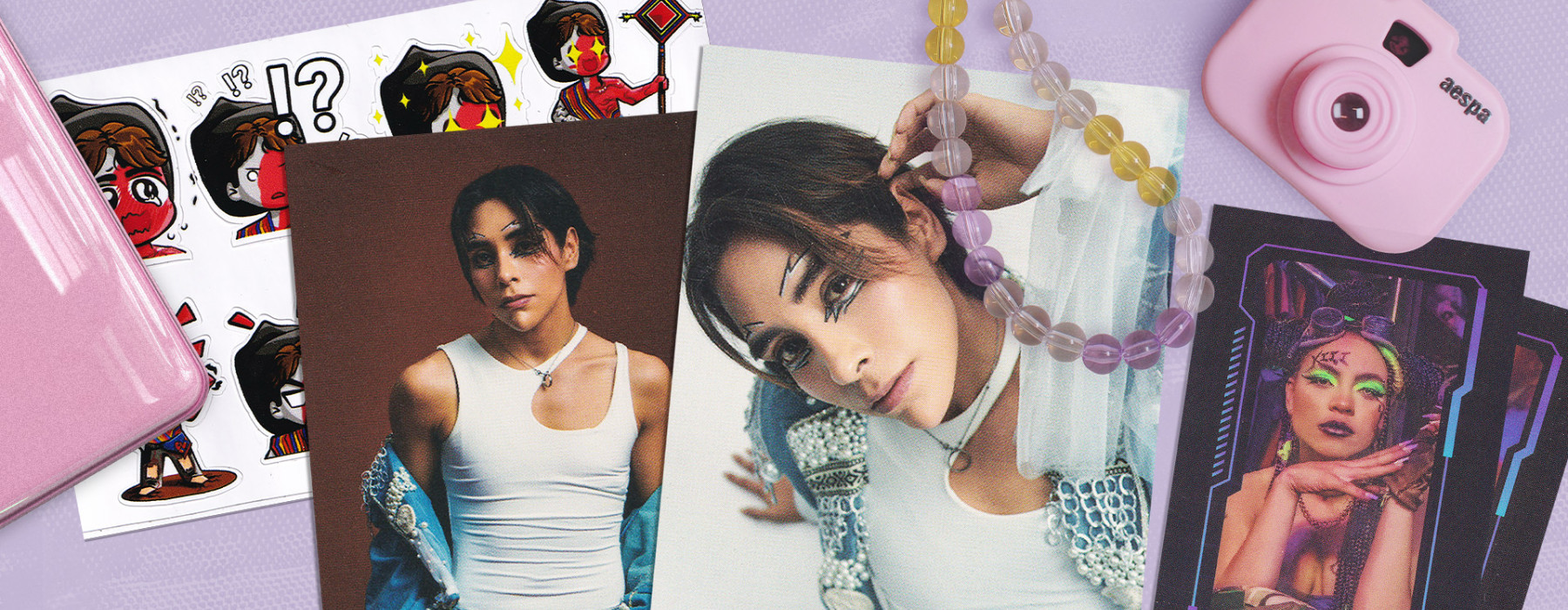
K-pop in a nutshell
Over the past twenty years, K-pop has captured the hearts of millions of people around the world. K-pop refers to popular music produced in South Korea since the 1990s. Artists there are specially trained to become “idols.” K-pop mixes different music styles – from hip-hop and electronic dance music to jazz and country. Koreans call this unique mix jjamppong, which means “everything mixed together.”
Bands such as BTS, Blackpink, and Stray Kids are well-known representatives of this music genre. These artists are frequently mentioned in newspapers, on YouTube, or on Instagram.
K-pop is no longer only popular in Korea, but has also grown into a global phenomenon. Millions of fans live in countries such as Indonesia, Thailand, and China. The scene is also expanding in North and South America, where local bands and artists combine their own musical styles with K-pop influences. The exhibition highlights, among others, the Brazilian band EVE and the Peruvian solo artist L E N I N.
Photography and Photographers
In K-pop, visuals are just as important as music. Photos and other visual elements convey the style and identity of a group or artist. To make these visuals tangible for fans, K-pop labels have renewed their focus on physical albums, even in an era where most music is consumed digitally.
Photographers are the silent driving force behind this visual language. They collaborate with set designers, stylists, and makeup artists, and their work regularly appears in major fashion magazines such as Vogue, Elle, Dazed, and W Korea. Many of these photographers work at the intersection of art and fashion and have a global influence on both K-pop aesthetics and fashion photography. Their work frequently appears in leading publications, combining personal style with current trends.
The exhibition highlights the work of two industry photographers: Mok-Jung Wook and Kim Sun-Hye. Their collaborations with various labels and groups, including SHINee, BTS, Astro, and REI, have contributed to the distinctive K-pop style.
Collecting Culture
K-pop is not only a music genre but also a cultural phenomenon in which fans play a central role in the success of artists and groups. They are the driving force behind the global multi-billion-dollar industry.
Collecting photographic merchandise is an important part of K-pop fan culture. Music albums are especially popular, often striking and carefully designed with a focus on interaction and storytelling. It is common for a single album to be released in multiple versions – from singles to special editions, and even individual versions for each band member. These are created to spark curiosity and make a concept tangible.
Albums do not consist of a CD alone; they include a variety of collectible items such as photo books, photo cards, posters, postcards, keychains featuring the artist or band, photo frames, and even ID cards. Fans collect these albums, which strengthens their connection to their favorite group and supports the artists’ careers.
In these albums, K-pop often reinterprets historical photographic formats – such as carte-de-visite, ID photos, postcards, photo books, Polaroids, or contact sheets – giving them new life. In this way, traditions are reused, reinterpreted, and consumed, becoming part of the K-pop universe.
Fan-Made
Fans support their favorite artists not only by collecting albums and merchandise but also by creating fan art. By modifying existing photo cards or box sets, or by producing original drawings or photo collages, they demonstrate both their love and deep knowledge of the artists. Fans use images found online or take their own photos during concerts. These artworks are then shared online or during K-pop events with the fan community.
The effort and time fans dedicate to this creative practice is showcased in the exhibition through works by Eva Bergsma, Alejandra Gonzales, Marije Dijkstra, Floor Mulling, Genevieve Korte, Mar Yépez Abad, Abel Brito, Matahari Natal, Davina Deijns, and Kim Hoffman.